Inside Martin Waller’s English country home
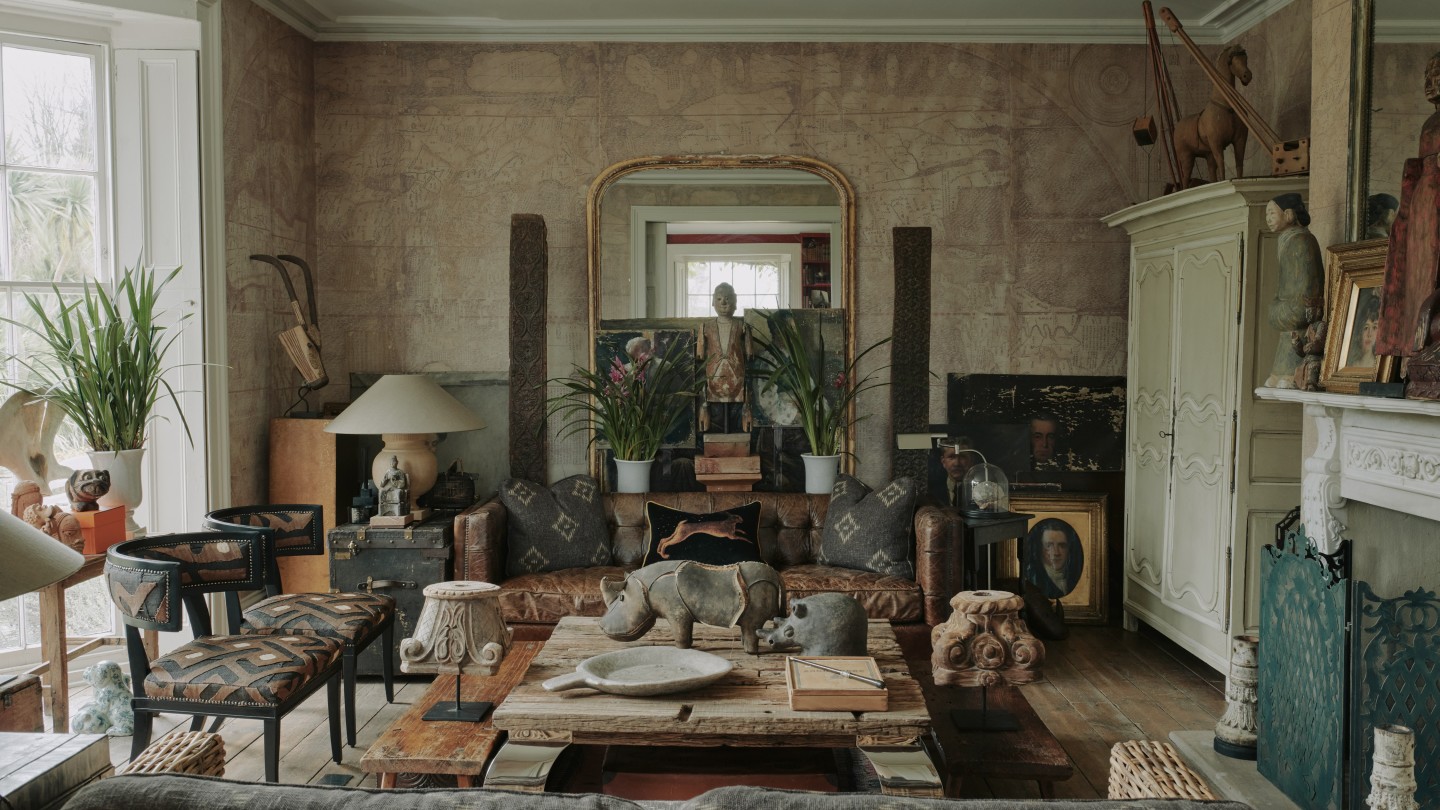
Roula Khalaf, Editor of the FT, selects her favourite stories in this weekly newsletter.
Martin Waller’s West Sussex home, a Georgian country pile rising majestically from the verdancy of 30 acres, is everything one would expect from the man behind the international design firm Andrew Martin, a brand founded in Richmond in 1978, which has since become a go-to for furniture, fabrics and accessories imbued with a global-inspired aesthetic. But the house, which he shares with his family, reveals much more than an ideal of rural living. It is a repository for the things that matter most to them – and, as Waller has overseen the decor, reveals as much about his lifelong passions as it does about his eclectic take on design. In the garden, however, Waller has wisely surrendered control of the reins to nature. “I’m not a keen gardener, so my justification is that I’m rewilding the grounds,” he jokes. “We have deer wandering across here, which I think is wonderful. Of course, any serious gardener would be terrified of them eating the roses, but for me it’s better to have the deer than the flowers.”
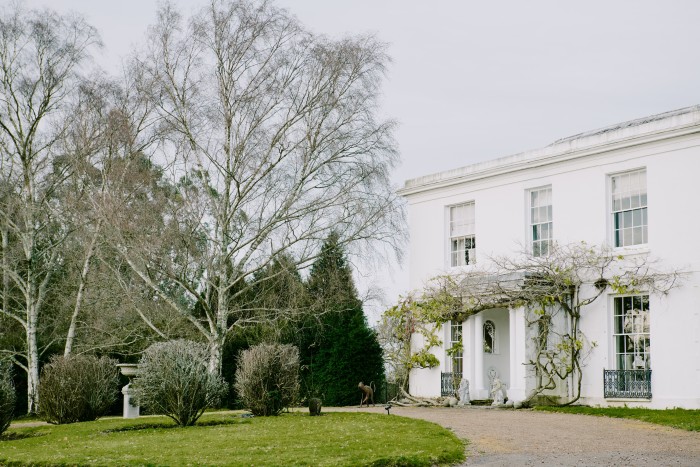
Inside the house, the hallway is cosy and inviting, despite the colour scheme of chalky whites and creams. Waller has transformed the space into a sitting area – the fireplace its sociable focal point. “I’m a great believer that texture is as important as colour and pattern. Nothing in here is terribly grand, but we’ve got these nice old pots and old things, which all have lovely textures,” he says, pointing to a pair of garden urns and a stone deer sleeping on the mantle. The pieces, weathered by time spent in the garden, create a link to the view framed by the windows.
On a nearby table, tall distressed-wood candlesticks tower over pot plants fringed with greenery, and a buffalo skull adds to the sense of faded grandeur. But it’s a collection of ceramic vessels displayed ad hoc on the shelves that take the eye. “They’re my French jars. I pick them up from various fairs when I can. It’s a slippery slope – they eat up shelf space.” Animals in various guises are dotted around the room, including a much-treasured vintage elephant on wheels, tucked in the fireplace. “I’ve never really grown up in any shape or form, so the house is full of old toys,” Waller says.
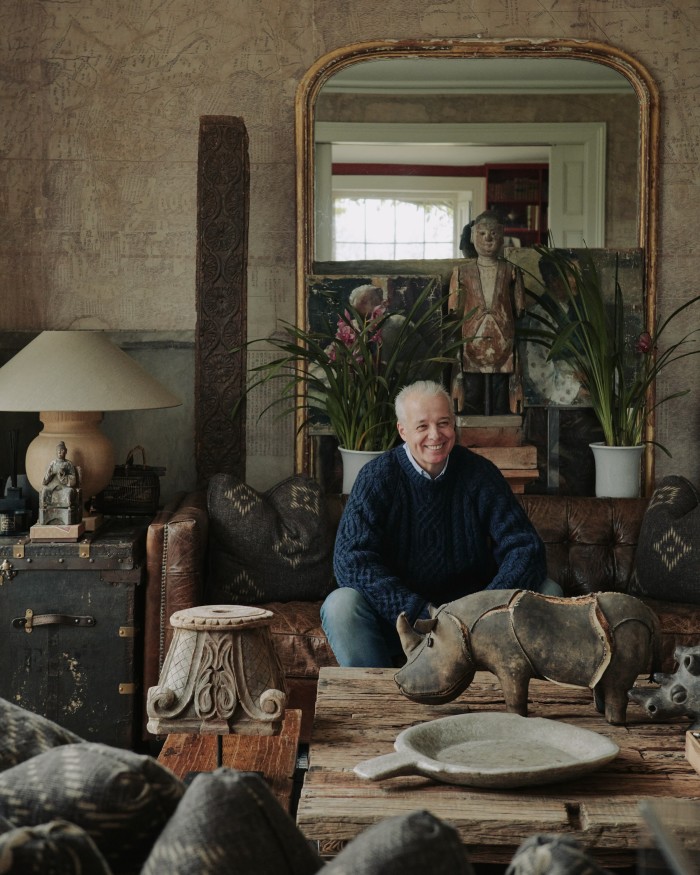
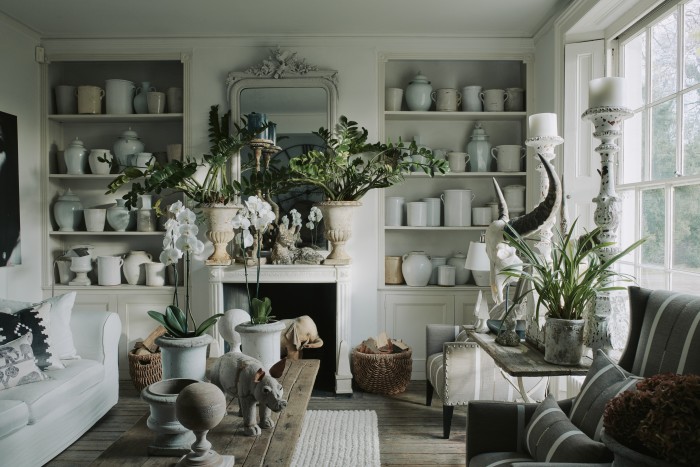
Every detail in the house, no matter how innocuous, has a narrative, and Waller’s decorative wooden fish, signposting the way out of the entrance hall, is no exception. “In the very early days of my interior-design business, I’d buy ceramic fish from Thailand and ship them over, but they’d always arrive broken. So I decided to go to Shanghai and commission woodcarvers to make these. It was all a very long time ago – way back in the 1970s,” Waller recalls. “So when I saw this one at an antiques fair, I had to buy it back. It was unbelievable to find it more than 40 years after I first sold them.”
Waller’s library is the antipode of the entrance hall – its red walls a vibrant jolt to the senses following the serenity of neutrals. This, he readily admits, is his den, every nook and cranny given over to his many interests. “I love this room. It’s a receptacle not just of my life and the children’s life but also of my forebears’ lives – this is where I keep all the old letters and books that they read,” he says. The assortment of books stacked high on the shelves betrays Waller’s Peter Pan-like persona – something he wholeheartedly embraces. “I have lots of childhood books. There are examples by GA Henty, and I’m a sucker for Ladybird books,” he says. “At one time, I had a huge collection of autographs on show at our Walton Street showroom in Chelsea – everyone from Napoleon to Elizabeth I – but now my ambition is to find autographs from everyone that I have a Ladybird book about. So far I only have Elizabeth Fry,” he laughs. “I’m slightly worried about Robert the Bruce and Marco Polo – and Jesus of Nazareth could also be a problem.”
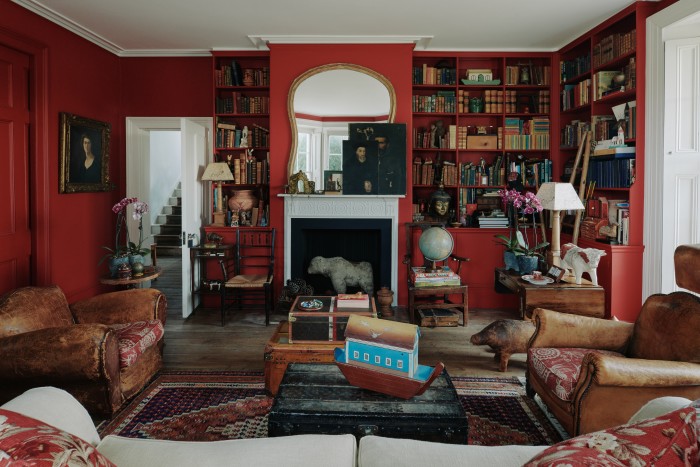
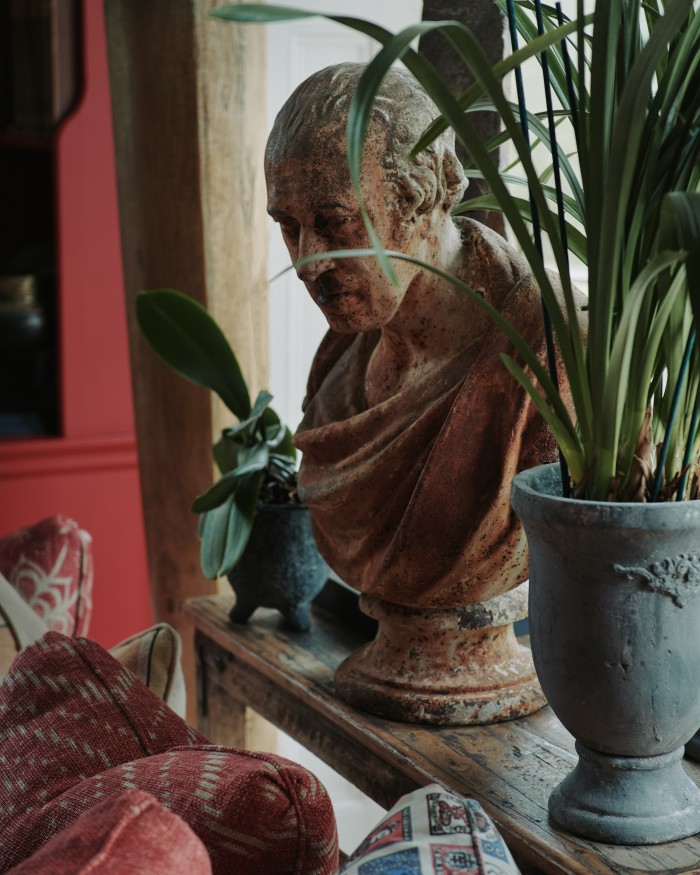
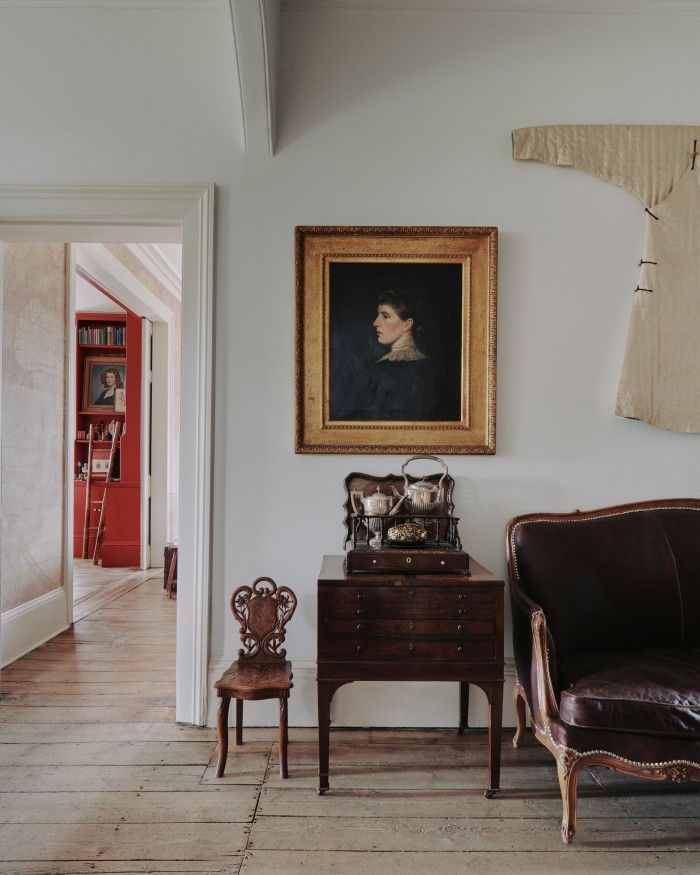
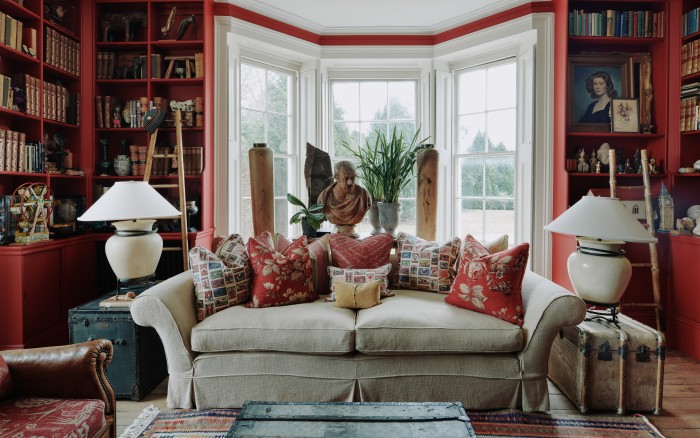
More toys peek from the bookshelves. “Noah’s Arks are a weakness,” Waller admits. “Now I understand the film Citizen Kane in a way I never did in my youth. Kane’s obsession with Rosebud, his boyhood sledge – toys from your childhood are so resonant. It took me years to work that out. You lose a lot of that, so it’s about recapturing it.”
Grown-up design counters childhood obsession. A large Noah’s Ark sits on a vintage Louis Vuitton trunk repurposed as a coffee table, circled by leather armchairs distressed beautifully with time and use. A globe perched atop a “Magic Robot” box on an old wooden chair is overlooked by a gilded Buddha head resting on the bookcase.
The aesthetic becomes a little glossier in the space Waller calls his “Map Room”. “I’m a fellow of the Royal Geographical Society, and they have these fantastic maps there – half a million of them. This is an old Chinese map that places China at the centre of the world,” he says, pointing to the sepia-toned wallpaper that makes for a deeply atmospheric room. Layered with leather and wicker, and with paintings stacked casually on the floor, the decor has a palpable global influence. “There’s quite a lot of Chinese artefacts in here, such as the nice little ancestor figure sitting on a Louis Vuitton box of postcards. The rhino on the coffee table is one of those Liberty figures they did in the 1960s,” Waller explains. “I love things when they are a little battered. Everyone tells you that antiques should be in pristine condition, but I always like things to be well used – full of patina and history, and well respected.” There are a few surprises among the treasures too. “This impressionist painting belonged to Noël Coward, which is the best thing ever, not least because it’s an absolute fake.”
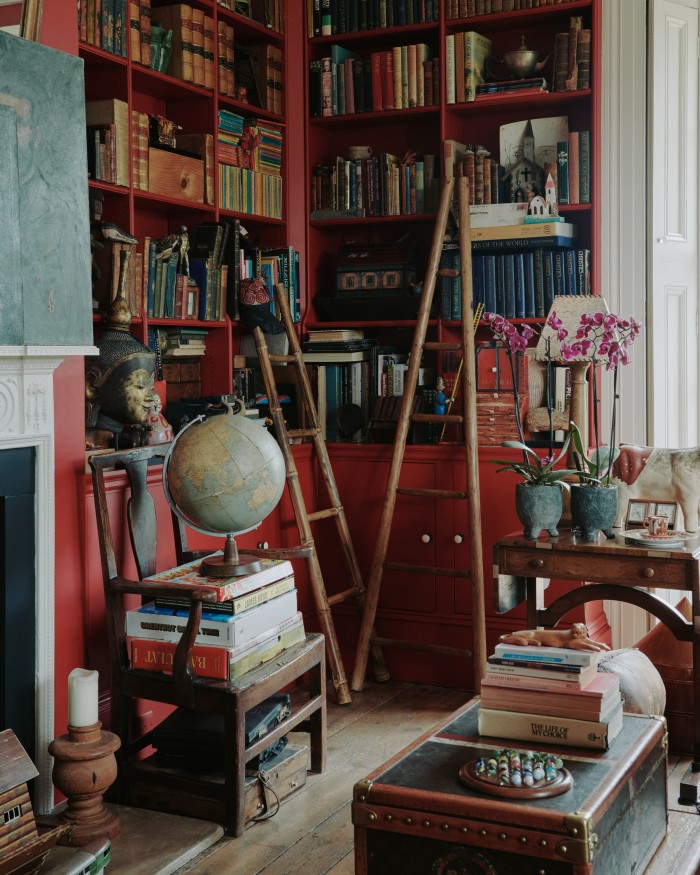
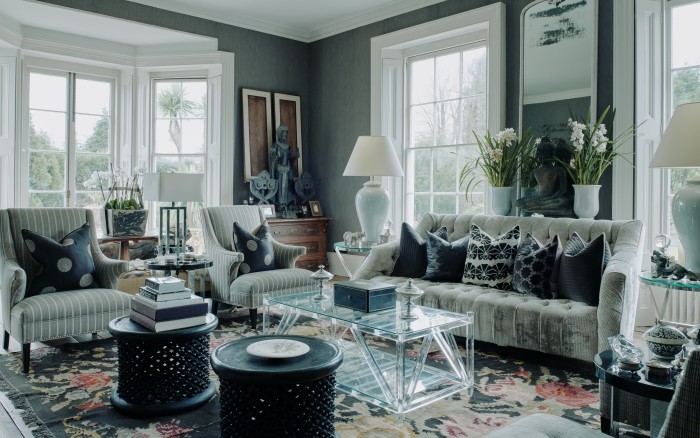
There are more portraits hanging in the hallway leading to the formal drawing room. Each one is a looking-glass into Waller’s family history. “There’s one of my great, great grandfather, which was an astonishingly serendipitous buy. My partner Sue happened to spot him in a sale at our local auction house – she just saw the name and said to me ‘Is he some kind of relative?’ Of course, old portraits sell for nothing these days, so we were able to buy him and his daughter for £200. It was just the most extraordinary, fortuitous thing, and, naturally, he is a very handsome fellow.”
The drawing room has a sophisticated feel, its strong grey palette neutralised by natural light, which streams through the patio doors and windows. “Those Georgians were geniuses, weren’t they?” Waller quips. His aesthetic here plays with juxtaposition: a ceramic plate by Picasso adorns an African stool, and drawings by Matisse are placed casually on view. He’s covered the floor with a floral Indian rug, offsetting the formality of the armchairs and neat rows of cushions, covered with different prints. The cushions are karate-chopped (a chop of the hand creating a central indent at the top of said accessory), a clever 1980s design throwback – which, given that it’s also used in the window displays at Waller’s Chelsea showroom, might be something of a stylistic obsession. “This is an old acrylic table, which I love because the ’70s was such a seminal decade,” Waller says of the central piece in the room. “Acrylic is always about to make a comeback but never quite does. Things now are much more puritanical and sober than they were back in the day.”
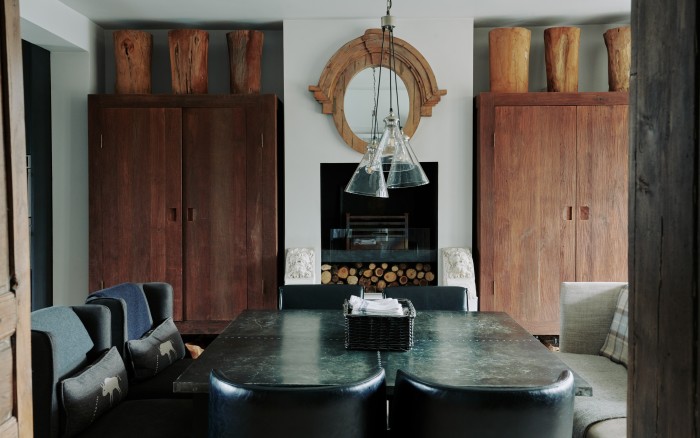
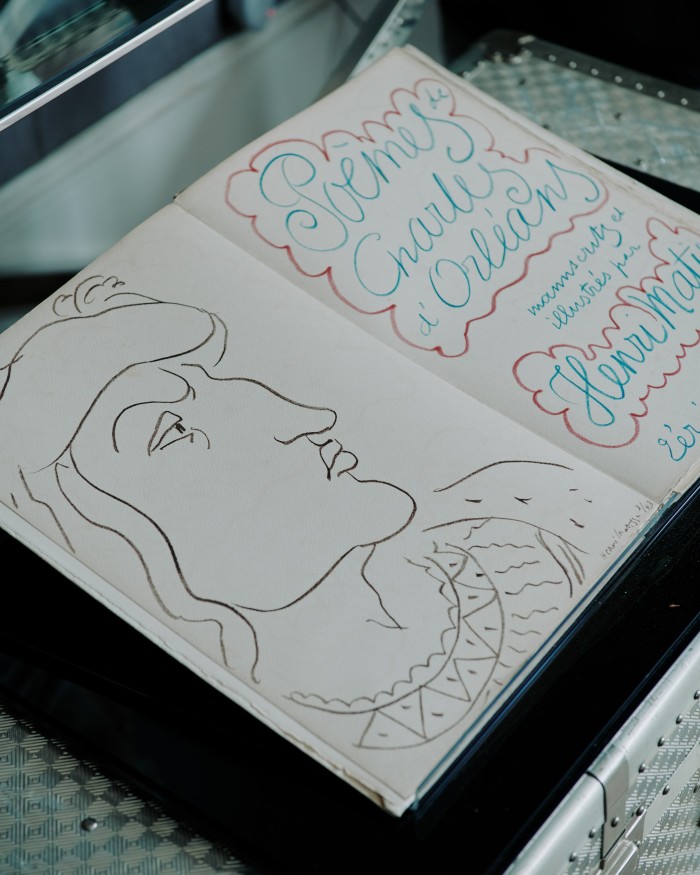
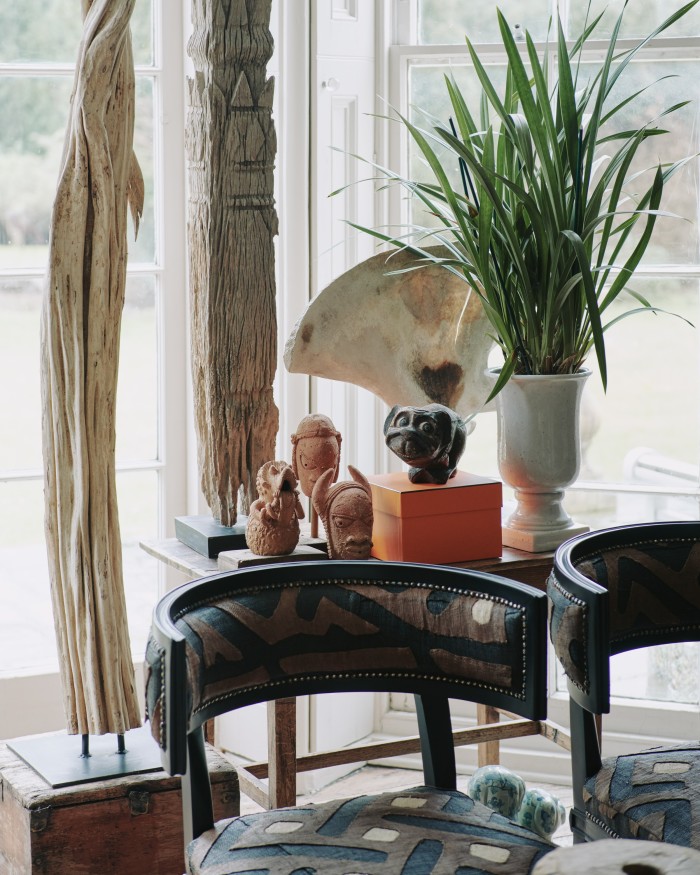
The kitchen at the far end of the house shares the same airy ambience as the drawing room, but here the industrial graphite drawer fronts and concrete work surfaces are tempered by raw hewn wood and arrangements of rustic wicker baskets. The surprises, of course, keep coming. The kitchen island opens to reveal hidden storage with a single command to “Alexa”, conjuring the kind of drama matched only by the basement cinema room and its magically materialising projector screen.
Is Waller content with the idyll he has created in the English countryside? “It feels like it’s right now,” he says. “That’s what decorating is about – it’s a personal journey and a reflection of your life – who you are and what you have done. I’m not really into multigenerational homes passed down through the centuries. I think every generation should start from scratch and tell their own story.”
Letter in response to this article:
Here’s something to cushion the blow / From Peter Griffin, Llandinam, Powys, Wales, UK
Comments